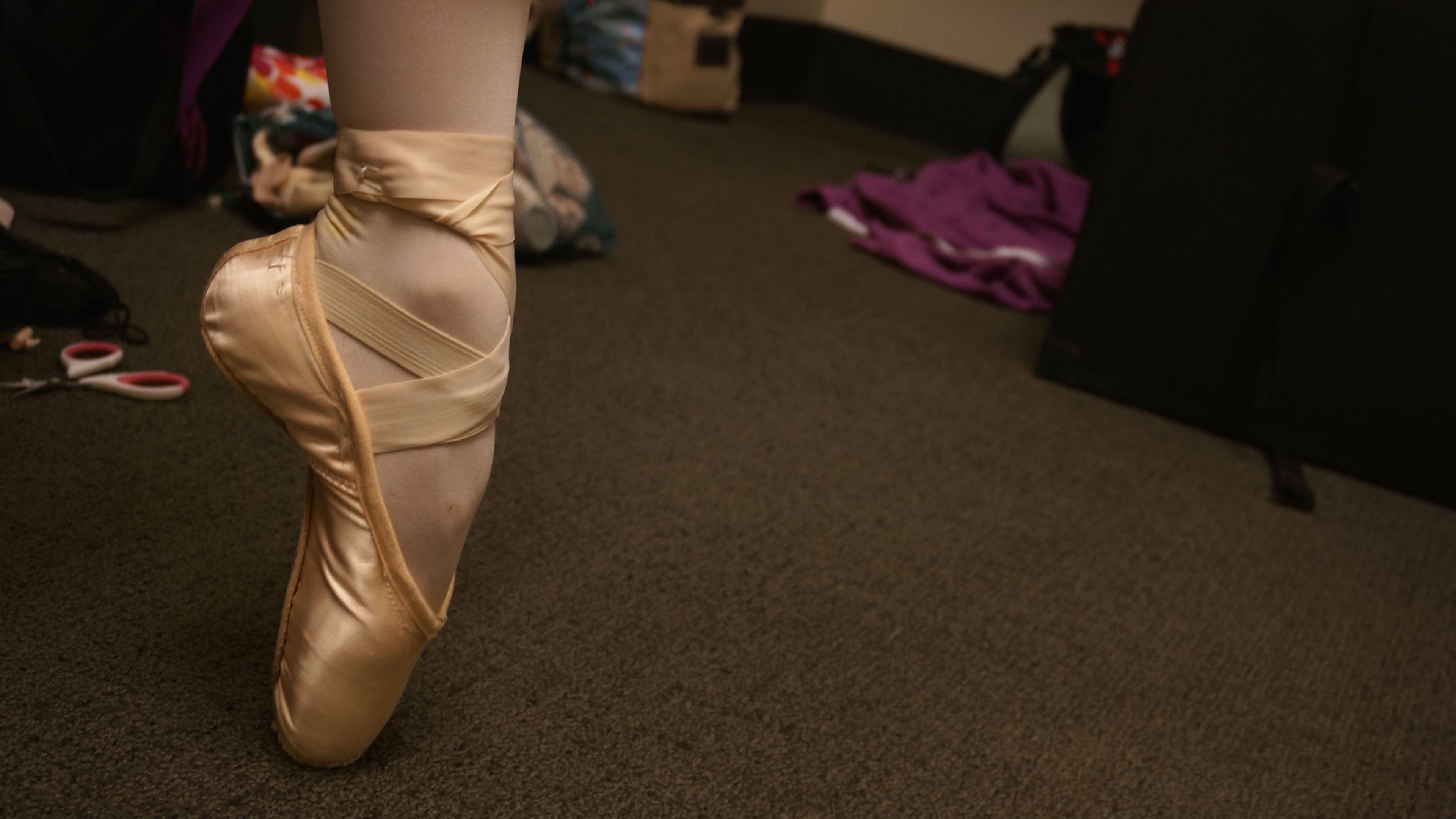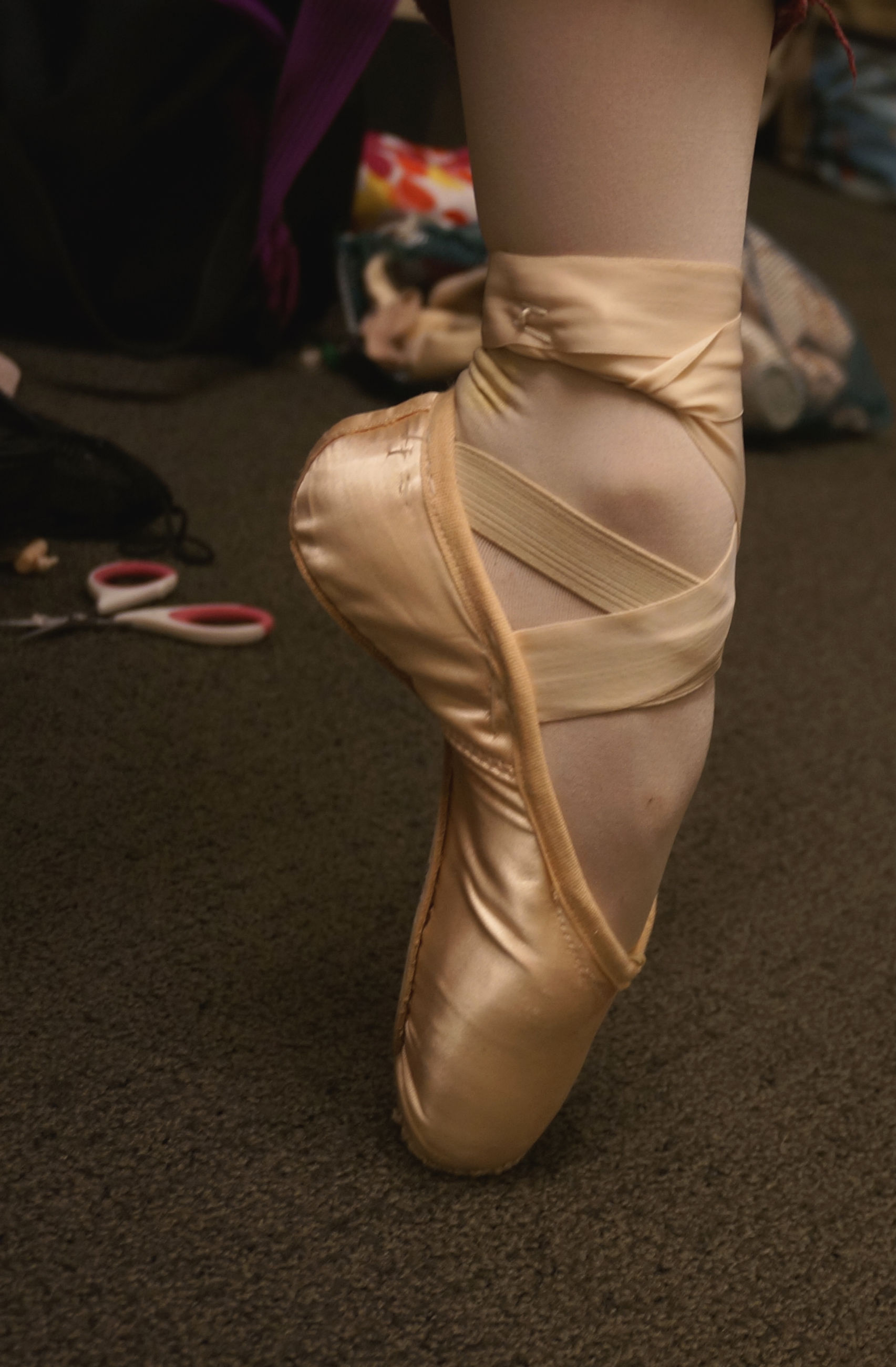
 Grand Junction poet Suzanne Bronson became fascinated by the connection between a ballerina and her footwear after coming across a collection of autographed dance shoes while she was a student at Colorado Mesa University.
Grand Junction poet Suzanne Bronson became fascinated by the connection between a ballerina and her footwear after coming across a collection of autographed dance shoes while she was a student at Colorado Mesa University.
The collection, owned by university dance professor Melonie Buchanan Murray, included pointe shoes worn by New York City Ballet principal ballerinas Wendy Whelan and Sterling Hilton, as well as a pair of men’s slippers from Robbie Fairchild, also a principal dancer with the Manhattan ballet company.
The dancers gifted the shoes to Murray after making guest appearances in a Grand Junction production of “The Nutcracker.”
The three pairs of signed pointe shoes inspired Bronson to write a poem.
Bronson’s “En Pointe” uses the stresses of wearing pointe shoes as a metaphor for the dedication and pain dancers endure throughout their careers.
 “En Pointe”
“En Pointe”
Ligaments, joints becoming, adapting
to the job, my feet began to look
worse than they feel, awakened with
technique, strength, and repertoire.
Along with my rises and releves,
I thought I had found my balance
in the smell of leather and satin,
when I brought my first toe shoes home.
Cracking them like the spine of a
well loved book, I flexed back the sole
sewing, breaking, gluing,
the meditations of shoe shaping.
Now these soft pink shoes, are fitted,
fashioned to protect feet made ugly,
calloused, skin made hard,
for the controlled, shuddering step, en pointe.
A ballerina readies her shoes for dancing
The process of preparing ballet shoes for dancing is an intricate and time-consuming one.
It takes Colorado Ballet principal dancer Sharon Wehner nearly three hours to make her pointe shoes danceable. Wehner dances the role of Titana, Queen of the Fairies, in the company's production of "A Midsummer Night's Dream" at the Ellie Caulkins opera house this weekend.
“The first thing I do when I get a pair of pointe shoes is I darn the tips -- which is I go around the edges with embroidery thread,” Wehner says. “That makes them quieter and a little less slippery.”
After darning her shoes, Wehner sews on the ribbons and elastics, pours old-fashioned, store-bought shellac into the tips of her shoes to harden them, removes a quarter of the shoe’s sole called the shank so it fits the arch of her foot perfectly -- and that’s only the start of the process.
Some dancers also put water on their shoes to break them in. Others slam them in doors or bang them to soften the tips.
“Everybody has a different routine, depending on their feet and the shoe,” Wehner says.
Wehner’s pointe shoes come from Freed of London, a dancewear company based in the United Kingdom. At Freed, pointe shoes are still handmade and dancers commonly request specific shoemakers when ordering new footwear.
It seems like a lot to go through for one pair of pointe shoes, especially since Wehner goes through a pair in a little under a week. But, as Wehner point outs, the fit and feel of pointe shoes can have a significant impact on a dancer’s day.
“Sometimes it seems like the shoes have a personality of their own,” Wehner says. “It actually will affect your performance, depending on the shoe.”
Watch the video below to see how pointe shoes are made.
Tune in to the Colorado Art Report this Friday at 10:30 a.m. and 7:30 p.m. to hear Bronson recite her poem “En Pointe.”









